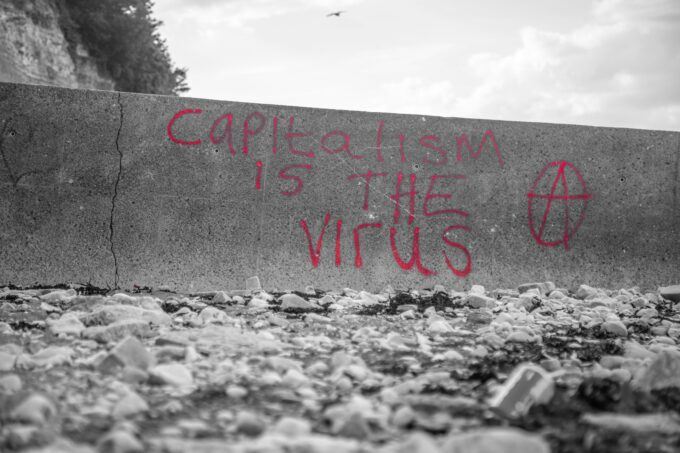
By: Sammi Ibrahem,Sr
Libyan inscriptions and the myth of linguistic minorities “promoted under Berber or Amazigh claims”
In addition to the archaeological excavations and the nature of the ancient man through the skeletons discovered in North Africa, which followed the lack of a relationship between the ancient human components of North Africa and the linguistic minorities that some collect under the pretext of Amazigh add inscriptions known as Libyan, which confirms the absence of any connection to the languages that were widespread in North Africa and oral languages Historically known Berber and promoted today Adelogia alleged Amazigh, although this Amazigh there is not a single text or inscription confirms its existence in ancient North Africa and the branch of Afro-Asian languages in North Africa, but just a Muslim These are some facts about the impossibility of deciphering the debates in North Africa because there is simply no link between the language or the inscriptions in that line and the linguistic reality prevailing today in North Africa.
Are the ancient Libyan inscriptions inscribed in Berber as claimed by the Berber tendencies?
Algerian historian says the late # Mohammed # small # Ghanem mercy of Allah in the publication of an article entitled “Libyan inscriptions in
North Africa “: (There is almost complete disconnect between the Libyan language, represented by its ancient inscriptions and the current Amazigh dialects in North Africa, the interruption expressed by Salim Chaker (salem chaker), a researcher in the field of Amazigh heritage from the tribal dialect, and that In his book (Texts in the Berber Language, p. 249), he said:
“The situation of the Libyan language is very puzzling and contradictory at the same time as we have an important complex of Libyan inscriptions (RIL), including a significant number of bilingual inscriptions (Pune-Libyan) and (Libyan-Latin) In addition, we now know very well the modern rules that underpin it However, the Libyan inscriptions are still not translatable “and the author then adds their question” Here we know why L. Gallond (1959) in one of his writings wondered whether the entire Libyan inscriptions, or some of their numbers, Books in an unrelated language to Berber? “
Is it that nearly 26 centuries ago, which represents the approximate duration of the emergence of the Libyan writing enough to make the connection of the latter break from the Berber dialects (Berber) present? This is if we consider that the latter related to the former!
Why does this interruption do not occur with the other ancient languages of the former or contemporary Libya with its dialects and modern languages, for example, what we see in the Arabic and Greek and other languages that are still relevant with its modern branches despite the recent developments that are subject to it?
If it is the opposite of what you expect? That is, there is a strong link between the Libyan and Amazigh! Why do not the scholars (Berber) and its supporters translate the Libyan texts available in our museums so that we can use them to use them to rewrite our ancient history, which is still most of the sources of biblical unilateral Greek and Roman?
Thus, we can prove that we had an ancient language such as Egyptian (hieroglyphics), Greece (Greek) and Europeans (Latin). )) Uh .
Says Dr. # Mohammed # Bashir # Hwica on page 99 and 100 of his book , Algeria read at the root of history and civilization: ((top of the problem of the old Libyan language spoken and written the entire historical problems related to ethnic and cultural roots of the Moroccan population …. and although spelled symbols are possible , but the # Mahtwaha_allgoa_maizal_sra_mpehma baffles interested and hinder researchers. Vallahjat Amazigh (Berber) spoken in several quarters of the Maghreb today # Kulailh_asalh in the Libyan mother .
It is therefore not possible to rely on these dialects to understand the contents of ancient inscriptions. scholars have tried to Amazigh (Berber) Til More than
a century, #Vlm_evlhawwa_vi_alosor_aly_mdechl_rabt_salh_lgoah_mtinh_ban_allibah_oallahjh_altargih for example, although this ispurest dialectsAmazigh (Berber) andmost acceptable in termsacceptance in termsprobabilityrelevanceold Ballibah, and despitefact that kinship is clear inalphabet between Tifinagh Altargih, which thinks that its namederived fromword (Phoenician) affinity Allfezan, and between The old Libyan writing, but the vocabulary of the latter is still intractable.
Photo: A funerary monument discovered in El Shafia, El Tarf province and currently in the Hippon Museum (all the Libyan inscriptions in Mouthak Hippon were not discovered in the archaeological city but in El Shafia) in Annaba containing a Latin-Libyan double text.
Latin text:
SACTUT • IHIMIR F • VIXIT • ANORVM •LXXH [SE]
Subtitles:
Skottut bin Hemer lived 70 yearsis buried here.
Libyan text:
ZKTT WYMR MTYBLH MSWH MNKDH,
the first and second word of course its meaning is Scott Scott of Himmer. The third word is believed to be a tribe or city and is likely to be the site of the Roman Tibilium. The rest of the text is incomprehensible.”
He specialized in Berber dialects between 1956- 1977 at the Institute of Oriental Languages and Civilizations in Paris. He was a professor at the Institute of Graduate Studies in Rabat, Morocco, after Jacques Bennet, who founded the Berber Academy in Paris and made that banner in the late 1960s. Punic terminology originates in the lexicon that he made and attributed it to the Berber dialect with all lies and fraud
Here came about the Libyan language quoted from the Phoenician civilization cradle of Arabism See Translation News network of Tunisia and the Arabs and Ajam and Berbers



